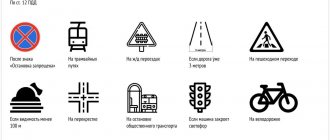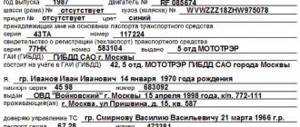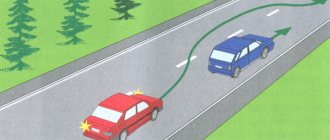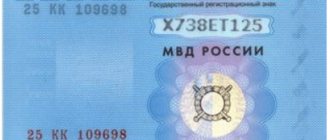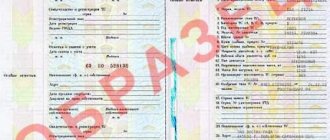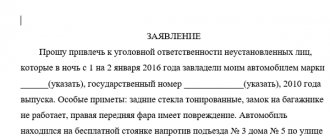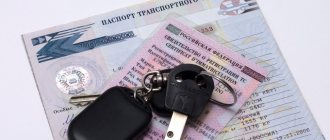Traffic rules concerning cyclists
Many fans of muscle riding do not even suspect that there are rules for them, so they fearlessly go on the roads. Such carefree reckless drivers can easily run into a fine when meeting with a traffic police inspector. Separate traffic rules for cyclists have not yet been issued. Their rights and obligations are set out in the traffic rules for vehicles, which include two-wheelers in paragraph 1.2. Consequently, all the requirements regarding motor vehicles must also be met by the owners of “big bikes”. But in section 24, 6 paragraphs are directly devoted to them.
Road signs for cyclists
There are special road signs required for cyclists. There are mainly three of them:
- “Bike path” (prescriptive).
- “Riding a bicycle is prohibited” (prohibiting).
- “Intersection with a bicycle path” (prescriptive).
Other signs are also required for cyclists. Special attention should be paid to information:
- "Motorway";
- "Footpath";
- "Pedestrian zone";
- "Road up";
- "Movement Prohibition";
- "Road for cars."
For violating traffic rules, a cyclist is subject to an administrative fine.
Attention! Within our portal, you can get advice from an experienced lawyer completely free of charge. All you need to do is leave your question in the form below. Contact us!
Most popular:
Basic provisions
Any person who wants to purchase a two-wheeled friend should know that with it he also acquires responsibility for the safety of other people. Therefore, you need to clearly know what this unit is from a legal point of view.
Bicycle as a vehicle
A device with a steering wheel and pedals, as the traffic rules for cyclists state, belongs to vehicles. Consequently, their owners are equal to drivers of cars, trucks, trolleybuses and buses. They, just like the driver of the KamAZ, are road users. This imposes a certain responsibility on cyclists and obliges them to behave correctly on the roads, without interfering with the movement of vehicles and pedestrians. Moreover, in the event of an accident, drivers of two-wheeled vehicles suffer first of all, since they are not protected by the body, unlike motorists.
Who can control
Manufacturers produce a huge number of bicycle models for all ages. Therefore, you can see both a three-year-old child and a pensioner driving such a device. It is clear that small children should travel on their three-wheeled units only when accompanied by adults and under their constant supervision, since they often do not know where they are going. The movement area for children is limited to pedestrian paths and sidewalks.
As for independent movement, there are age restrictions on movement in certain places.
Children from 7 to 14 years old can travel:
- along pedestrian areas;
- bicycle pedestrian and bicycle paths;
- pedestrian paths;
- sidewalks.
Starting from the age of 14, when a bicycle turns from a device for walking into a vehicle, its owner is allowed to ride in other places. At the same time, a list of rules appears, which are ordered to be strictly followed. If one or more of the top items from this list are absent in the road situation, you should be guided by the item below.
Movement is allowed:
- Along a bicycle lane or path, a bicycle pedestrian path.
- On the right edge of the road.
- On the side of the road.
- On the sidewalk, pedestrian path.
For example, if there is no bicycle lane or bicycle pedestrian path, you must go to step 2 and move along the right edge of the roadway. If this is also impossible (heavy traffic), you need to follow step 3 and pull over to the side of the road.
Cyclists' rights
Despite the fact that bicycles are classified as vehicles, their owners have limited rights, and this was done for safety reasons. Not all lanes of the roadway are accessible to two-wheelers, and even in the far right lane, they are only allowed to ride on the edge of the road.
But cyclists have the right to move:
- on the side of the road;
- along bicycle and bicycle-pedestrian paths;
- on sidewalks, provided that driving does not interfere with the movement of pedestrians.
Otherwise, you will have to drive the bike by the steering wheel. In this situation, its owner automatically becomes a pedestrian. If he collides with a car moving on the sidewalk (and in some cases this is allowed), he will not be at fault. But the cyclist driving will have to pay for car repairs if his guilt is proven.
Responsibilities
The driver of a two-wheeled unit must comply with all requirements for the movement of cyclists set out in the traffic rules.
He is obliged:
- keep the vehicle in technically sound condition;
- do not interfere with traffic;
- allow pedestrians to pass at intersections;
- do not interfere with the movement of passers-by on the sidewalks;
- in conditions of insufficient visibility, use light devices;
- Before turns, indicate changes in direction of travel with signs.
Main responsibilities
1. It is the responsibility of cyclists to maintain their vehicle in good technical condition. The bicycle must have a working brake and a working horn. Why we need serviceable brakes is not worth explaining. As for the bell, it is mainly required to warn pedestrians about the approach of a bicycle. When driving in traffic, it is unlikely that any other driver will hear your bell.
Driving on the road at night or during rain, fog or snow, that is, in conditions of insufficient visibility, is permitted only with lighting. On the front of the bike you need to put a headlight or an additional white reflector, at the back - a flashlight and always a red reflector, on the sides (closer to the front and rear markers) - flashlights or orange reflectors, red rear side lights are also allowed. It’s stupid and dangerous to put a red reflector in front, even if it’s lying around, car drivers rarely notice cyclists anyway, and there’s still such confusion.
2. A cyclist must ride as close to the right edge of the road as possible and only in one row with other bikers. The old Highway Code specified a specific distance from the side of the road that a cyclist had to maintain. It should be no more than 1 meter. In new editions this restriction is absent. Every reasonable person should, first of all, think about their own safety.
When overtaking another cyclist or horse-drawn cart, or when passing a stationary vehicle, you still need to briefly move away from the right edge of the road. And it’s better to drive around the obstacle as far as possible, especially a stopped car, because at any moment the driver can start to get out of it, pushing the door wide open, or a dishonest person will throw a cigarette butt out the window. And don’t forget that overtaking or detour should only be done on the left if you don’t want to be pinned to the curb.
3. It is also the cyclist's responsibility to sound warning signals before each maneuver, even if there is no vehicle behind. Before any turn or lane change and before braking, the bicycle driver must give a warning signal with his hand, and, importantly, not a second before turning the steering wheel or pressing the brake levers. You need to warn the driver behind you in advance, otherwise your delayed reaction will be critical.
The traffic rules provide for the following hand signals:
- The signal for a right turn or lane change is the right hand extended in the direction of the turn or the left hand extended away from you and bent at the elbow at a right angle.
- The signal for a left turn or lane change is the left hand extended in the direction of the turn or the right hand extended away from you and bent at the elbow at a right angle.
- The brake signal is the left or right hand raised up and straightened at the elbow.
Giving a hand signal does not give you any advantage in traffic, so always make sure that the driver behind you understands your intentions and does not overtake.
4. If there is a bicycle path next to the road, bicycle riders should only ride on it. The presence of such a benefit of civilization is indicated by a round road sign with a former bicycle on a blue background. And if the bicycle path is partially destroyed, covered with construction debris or occupied by parked cars, then the cyclist can bypass these traffic jams along the roadway; this is within his rights.
5. When driving in convoys, bicycle drivers are required to move only in one row on the road in groups of 10 people. The distance between groups is 80-100 meters to facilitate overtaking by cars.
Basic traffic rules
To ride a bicycle safely, you must follow the rules of the road, because this vehicle can reach a decent speed - up to 40 km/h, and a sports vehicle with a set of gears - even more. If you speed up and lose control of the situation, you can hit a person and get into an accident. Therefore you need to be extremely careful.
Maneuver signals
When moving along the roadway, bicycle enthusiasts must warn other road users about upcoming maneuvers. Before turning left (right), you must move your left (right) hand to the side. It is worth noting that turning left, except for cases specifically specified in the traffic rules, is prohibited for cyclists. In this situation, before the intersection you need to go down and cross it in pedestrian mode, leading your “iron horse” by the steering wheel, and then get back on the bike and continue to follow the intended route. Before braking, you need to extend your right or left arm up.
When driving in a convoy, another signal is used. It is served to those riding behind. A hand lowered down indicates the presence of a hole on the side from which the limb is lowered. It is better not to use a bent arm at the elbow to give signals (they are for car drivers), so as not to mislead those driving behind.
Lanes and lanes
Road markings are made for cars, so cyclists are only allowed to ride in the right lane closer to the side of the road, so as not to interfere with other vehicles whose speed is much higher. Cyclists are prohibited from traveling on expressways. You can't change lanes either. The exception is making a U-turn when there is no other vehicle on the road.
If cycling enthusiasts ride in a convoy, they must adhere to special rules:
- move only in one row;
- with a bike width of no more than 0.75 m, 2-row traffic is allowed;
- a large column is divided into groups of 10 bikers or pairs (with 2-row traffic);
- a distance of 80-100 m is maintained between groups (to facilitate overtaking).
Bikers are allowed to overtake other vehicles if the maneuver does not interfere with other road users. Overtaking takes place on the left side.
Behavior at traffic lights
Cyclists, like other vehicle drivers, must carefully monitor traffic lights and follow them strictly: stop when they are red and start moving when the light turns green. But they have one advantage - switching to pedestrian mode. If you use this wisely, you can reduce the time you spend at an intersection. When riding on the sidewalk, approaching an intersection, you need to get off your bike.
You cannot cross an intersection at a pedestrian crossing on a bike. You need to drive him. Having completed the transition, you can saddle the “iron horse” again.
If the road has only one lane for traffic and there are no tram tracks, the cyclist is allowed to turn left.
Crossing intersections
When the situation at the intersection is regulated by traffic lights, everything is much simpler. All that remains is to carefully monitor the signals and follow them correctly. At uncontrolled intersections, you need to know the rules for their passage, which are published in the traffic rules. First, all traffic moving along the main road is allowed through. If the roads at the intersection are equal, when driving straight ahead, traffic moving in the transverse direction on the right side is first allowed through. When turning left (which in most cases is prohibited for cyclists), all vehicles moving on the right and directly in the oncoming direction are allowed to pass.
To make the rules for driving through an intersection easier to remember, among drivers there is the concept of “obstacle on the right.” When moving straight or to the left, you must give way to all traffic located to the right of the biker. A car approaching in the oncoming lane, if the bicycle driver decides to turn left in front of him, will also become an “interference on the right”, therefore, you must definitely let it pass.
It turns out that the easiest thing to do at an uncontrolled intersection is to turn right. But for lovers of cycling, it is not easy when there is a car nearby, also turning right. In this situation, the bike may end up in a blind spot, the motorist will not notice it and will begin a maneuver, risking injury to the person driving the bike. The same thing can happen if the driver of a car wants to make a right turn, and the owner of a bicycle is riding straight next to him.
You need to pay attention in other situations as well. Even if you are confident that you are right, before starting the maneuver you should make sure that other drivers see the cyclist and know in which direction he will start moving next.
Transportation of children
Families often use two-wheeled vehicles to take their children to kindergarten. At the same time, they wonder whether transporting children by bicycle is prohibited. Children under 7 years old can only be transported with a special seat, which is attached either to the frame or to the trunk. In the first case, the child can be seen during transportation, and this is a huge plus, but it is much more comfortable for children to ride in the back seat. Children over 7 years of age and adult passengers can also be transported if this is provided for by the design of the bicycle. You can find out about this in the instruction manual.
Behavior at pedestrian crossings
Here the biker can behave both as a driver and as a pedestrian. In the first case, when approaching a pedestrian crossing, he must brake and allow pedestrians to cross the roadway without hindrance. In the second case, the bicycle is driven by the handlebars next to you, moving along the crossing in the same flow as pedestrians.
Illuminated bicycle markings
Riding in the dark is dangerous, so all bikes must be equipped with light markers. Retroreflective elements are installed on both sides of each wheel. There should also be lanterns. The front is white, the back is red.
The greatest danger is driving without illuminated signs in the fall, when there is no snow yet. In such a situation, car drivers do not see a cyclist moving along the edge of the roadway until he falls into the beam of headlights. When this happens, the driver of the car has too little time to react, so the largest number of hit-and-run bikers occurs during this period.
A bicycle is a vehicle
Home / Press / Hammer and Sickle / A bicycle is a vehicleA CYCLIST IS A DRIVER OF THIS VEHICLE, AND THEREFORE A ROAD TRAFFIC PARTICIPANT
TECHNICAL CONDITION OF THE BICYCLE
The driver of the vehicle is obliged to:
• Before leaving, check and ensure that the vehicle is in good technical condition on the way in accordance with the Basic Provisions for the admission of vehicles to operation and the responsibilities of officials to ensure road safety (hereinafter referred to as the Basic Provisions).
• It is prohibited to drive if there is a malfunction of the service brake system, steering, coupling device (as part of a road train), unlit (missing) headlights and tail lights in the dark or in conditions of insufficient visibility, the windshield wiper is not working on the driver’s side during rain or snowfall.
ALCOHOL INTOXICATION
• Clause 2.7 of the traffic rules prohibits persons under the influence of alcohol from driving a bicycle, as well as transferring control to persons under the influence of alcohol. That is, if a drunk friend tearfully begs you to give him a bicycle to ride to the nearest kiosk, he needs to persistently refuse this.
TURN SIGNALS
• Before starting to move, change lanes, turn (U-turn) and stop, the driver is required to give signals with turn signals in the appropriate direction, and if they are missing or faulty, with his hand. When performing a maneuver, there should be no danger to traffic or interference with other road users.
• The signal for a left turn (turn) corresponds to the left arm extended to the side or the right arm extended to the side and bent at the elbow at a right angle upward. The right turn signal corresponds to the right arm extended to the side or the left arm extended to the side and bent at the elbow at a right angle upward. The brake signal is given by raising your left or right hand.
• A bicycle driver must use turn signals before starting, changing lanes, turning, and stopping. Since bicycles are not equipped with light turn indicators, signals must be given by hand. Accordingly, a left turn signal corresponds to an outstretched left hand, and a right turn signal corresponds to an outstretched right hand.
• Turn signals must be given well in advance of the turn. You can return your hand to the steering wheel immediately before starting the turn.
WHERE CAN YOU RIDE A BIKE?
• Vehicles whose speed should not exceed 40 km/h or which, for technical reasons, cannot reach such a speed, must move in the far right lane, except in cases of detour, overtaking or changing lanes before turning left or making a U-turn.
or stopping in permitted cases on the left side of the road.
• The movement of vehicles on dividing strips and shoulders, sidewalks and pedestrian paths is prohibited (except for the cases specified in paragraphs 12.1, 24.2 of the Rules).
• Bicycles, mopeds, horse-drawn vehicles (sleighs), riding and pack animals must move only in one row, as far to the right as possible. Driving on the side of the road is allowed if this does not interfere with pedestrians.
• Most often, for technical reasons, bicycles cannot reach a speed of 40 km/h, so they must move in the far right lane of the roadway (in one row, possibly to the right).
• In addition, bicycles can be driven on the side of the road. However, bicycles are not allowed on sidewalks. If you want to move on the sidewalk, then you need to get off your bike and thereby equate yourself to a pedestrian.
BICYCLE DRIVERS MUST YIEVE FOR PEDESTRIANS
• The driver of a vehicle approaching an unregulated pedestrian crossing (the concepts of a controlled and unregulated pedestrian crossing are similar to the concepts of a controlled and unregulated intersection established in paragraph 13.3 of the Rules) is obliged to reduce speed or stop before the crossing in order to let pedestrians cross the roadway or enter the her to make the transition.
• A bicycle, like any other vehicle, must slow down or stop before crossing to allow pedestrians to pass.
LIGHTS FOR BICYCLES
In the dark, the bicycle must have headlights or lanterns on, and in the daytime, low beam headlights or daytime running lights.
In the dark and in conditions of insufficient visibility, regardless of road lighting, as well as in tunnels on moving
The following lights must be turned on in the vehicle:
• on bicycles - headlights or lanterns. During daylight hours on all moving
vehicles must have low-beam headlights or daytime running lights to indicate them.
AGE TO DRIVE A BICYCLE
• Persons at least 14 years of age are allowed to drive a bicycle, horse-drawn cart (sleigh), or be a driver of pack animals, riding animals or herds when driving on roads, and persons at least 16 years of age are allowed to drive a moped.
• Persons at least 14 years of age are permitted to ride a bicycle on roads. As for off-road driving, people of any age can participate in it. Let me remind you that sidewalks and roadsides are considered roads, so persons under 14 years of age are not allowed to travel on them.
PROHIBITIONS FOR BICYCLE DRIVERS
Bicycle and moped drivers are prohibited from:
• drive without holding the steering wheel with at least one hand;
• carry passengers, except a child under 7 years of age, on an additional seat equipped with reliable footrests;
• transport cargo that protrudes beyond the dimensions by more than 0.5 m in length or width, or cargo that interferes with control;
• move along the road if there is a bicycle path nearby;
• turn left or turn around on roads with tram traffic and on roads with more than one lane for traffic in a given direction;
• move on the road without a fastened motorcycle helmet (for moped drivers). It is prohibited to tow bicycles and
mopeds, as well as bicycles and mopeds, except for towing a trailer designed for use with a bicycle or moped.
I don’t think it’s worth reminding that in the event of an accident involving a car, a bicycle helmet can save your life.
E. SEMENOV, deputy commander of the 1st traffic police battalion (northern).
FROM THIS LIST YOU SHOULD CHECK THE FOLLOWING POINTS:
/ Bicycle drivers are prohibited from turning left or turning around on roads that have more than one lane in a given direction. Those. A cyclist is prohibited from turning left almost everywhere in the city.
We can suggest the following way out. The bicycle driver leaves his vehicle and becomes a pedestrian. Then he crossed
points the intersection in the required direction. After this, he gets back on the bike and continues moving along the road/sideside.
• Towing by bicycles or mopeds is prohibited.
/ When riding a bicycle, a special bicycle helmet is not required, but it is recommended that all bicycle owners purchase one.
Bike Lane. Allowed
traffic only by bicycles and
mopeds. Along the bike path
pedestrians can also move (if
lack of sidewalk or pedestrian
tracks).
Major violations
The most common violation is cycling in a pedestrian crossing. Moreover, the bikers themselves do not consider this a violation. Drivers are not required to let bikers pass at the crossing, because they are not pedestrians. That's why they are often hit by cars. During school holidays, many children suffer from ignorance of this nuance. Pedestrians can also be injured when the flow is dense and the speed of the two-wheeled vehicle is high.
The second most common violation is driving along the edge of the road in the opposite direction. Pedestrians are allowed to do this if there is no sidewalk nearby. But cyclists do not relate to them when they are sitting in the saddle, although they sincerely believe that in this case they are doing the right thing.
Other disorders that are less common include:
- riding without hands;
- transportation of children and passengers on bikes not intended for this purpose;
- transportation of oversized cargo, when the luggage extends beyond the dimensions of the bicycle by more than half a meter in width;
- driving on highways;
- left turn when there are two or more traffic lanes, as well as tram tracks;
- using a bike as a tow vehicle.
Responsibility for broken rules
The cyclist is responsible for:
- driving without holding the steering wheel with both hands;
- transportation of passengers on an additional seat (with the exception of children under 7 years old);
- driving on a public road if there is a bike path nearby;
- transportation of objects 0.5 meters long;
- driving on a motorway;
- driving in the dark without the lights on;
- ignoring special characters;
- drive left, turn along the tram tracks;
- riding without a bicycle helmet;
- travel on the sidewalk, pedestrian paths (for adults);
- travel along the sides of public roads, dividing strips;
- towing another bicycle or several using a hitch.
Along with drivers of other vehicles, cyclists receive a fine:
- for driving while under the influence of alcohol or drugs;
- handing over a bicycle to people who are overworked, have any painful condition, or are taking potent medications;
- intersection of organized columns, including bicycle columns;
- use of intoxicating, potent drugs;
- after getting into an accident (even if the cyclist is not the culprit);
- talking while driving on the phone without a headset;
- cycling without sufficient rest.
It is a violation for a cyclist to cross an intersection or pedestrian crossing incorrectly.
Fines for cyclists
It is noteworthy that in the Code of Administrative Offenses (CAO) a bicycle is not classified as a vehicle, but there is a special article 12.29 dedicated to violations by bicycle bikers. A fine of 800 rubles is imposed if traffic rules are violated while sober, and from 100 to 1,500 rubles if the biker was intoxicated.
If the driver of a two-wheeled vehicle moves in pedestrian mode, another article of the Code of Administrative Offenses applies to him - 12.30. In case of interference with another vehicle, a fine of 1 thousand rubles is imposed for the violation. If you cause harm to health of mild or moderate severity, you will have to pay a fine of 1,500 rubles.
Duties of a cyclist
A cyclist is required to equip his bicycle with headlights. The front is white and the back is red, just like a car. The wheels at the back, front and sides should be equipped with reflectors so that in the dark other drivers can understand who is driving ahead. The bicycle must also have a handlebar, brake system and sound signal in perfect condition. To carry passengers there must be a special seat attached to the trunk or frame . This applies to the transportation of preschool children.
A cyclist must travel along the highway in the far right lane if there is no bicycle path on this section. If there is one, then you are allowed to move only along it. On the highway, a cyclist moves in the same direction of travel as other vehicles, and not towards them.
Bicycle columns must move in one row, the maximum number is 10 people. If the group of athletes is larger, it is necessary to divide into 2, 3 or more columns depending on the number of cyclists. The distance between columns must be at least 80 meters to provide sufficient maneuvering space for vehicles.
A bicycle does not have turn signals, but nevertheless, the person driving this vehicle is obliged to give signals indicating his intentions. If he wants to make a turn to the left, then he shows it with his left hand extended in that direction, if to the right, then with his right hand. When a cyclist wants to stop, he must extend one arm high up.
Fines
Despite the fact that the fines for cyclists are not as high as for car drivers, for example, repeated administrative liability does not bode well. Thus, for driving a two-wheeled vehicle while intoxicated, the driver faces a fine of 1,000 to 1,500 rubles. Approximately the same amount will have to be paid if the cyclist created obstacles for the movement of cars. Causing harm to health due to the fault of a cyclist - 1000-1500 rubles.
Prohibitions for cyclists
The official document contains a section regarding prohibitions for cyclists. They all boil down to the fact that a person driving a vehicle should not create obstacles for other road users. Here are its main provisions:
- A cyclist has no right to ride without releasing the handlebars (you must hold it with at least one hand).
- Cross the road at a zebra crossing on a bicycle (this is a pedestrian zone, so you can get off the bike and ride it in your hands).
- Carry cargo that protrudes more than 1.5 meters in any direction.
- Operate a bicycle while intoxicated.
Considering the fact that a bicycle is a vehicle according to traffic regulations, one can guess that traffic police officers can stop the driver, draw up a report in case of traffic violations, and also issue a fine corresponding to one or another item.
